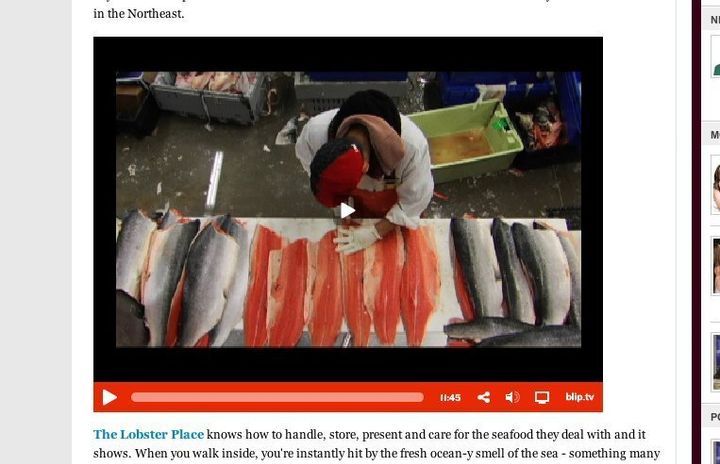
If there is such thing as the Fish Book A-Team, then I've seen it in action; that is to say, action that's light on explosions but heavy on fish jokes. A number of seafood-centric writers and scientists including Paul Greenberg, Mark Kurlansky, Carl Safina and others recently gathered along with an almost hundred-strong audience in the cozy 19th-century confines of New York's South Street Seaport Museum to tackle a not-so-common question: Can New York seafood be local again?
For recreational fishermen in the city, this question may sound ridiculous. Of course there are local fish, caught year-round if not always kept and eaten. But for those of us whose only encounters with fish occur on a dinner plate, the distance between us and local, wild fish - 84 percent of the seafood consumed in the U.S. is now imported -- has become so great that seeing someone reeling in a fish from the harbor generates a mixture of disbelief and disgust: You're going to eat that? one might be compelled to ask, staring at the fresh catch flapping away on the pavement.
Not to say that reaction lacks merit. A couple of the speakers at the symposium admitted to testing positive for elevated PCB levels thanks to their fondness for local city fish, and the last thing anyone should do is steam up some shellfish found clinging to a city pier.
But not so very long ago, New York City oysters grew to the size of dinner plates and acted as social equalizers because everyone, from the poorest to the wealthiest, ate them.
You may be familiar with the expression, "Don't sh-- where you eat?" Well, apparently New Yorkers didn't get the memo until at least the 1930s --until then, early sewers simply guided the untreated waste of a rapidly-growing population directly into the harbor.
As a result, New York City oysters became less famous for their deliciousness and more notable for spreading cholera and typhoid.
New York is still thought of as an oyster town, though by the late 1920s, the last of the city's oyster beds had been wiped out by a combination of overharvesting and pollution. Just as in other port cities around the country, the connection between the city and its signature shellfish exists solely as a fading collective memory. So unless you're a recreational fisherman, you probably don't consider city-caught fish, much less an oyster, an option.
While eating fresh East River striper might not be the best choice right now, there are some alternatives to consider. First, it makes sense to look a little beyond the city limits and buy sustainably-caught fish directly from fishermen in nearby regions, some of whom even sell directly at local farmers markets. Sea to Table, one of the participants in the symposium, has started linking New York City chefs with fishermen in Montauk, meaning that hook and line-caught albacore tuna, for example, are making their way directly from Long Island docks to city restaurants.
As for local oyster options, the aptly-named Oyster Bay on Long Island now supports a thriving edible population, and a growing number of oyster and other shellfish nurseries and hatcheries on Long Island -- some even solar-powered! -- are helping to restore New York's once mighty shellfish industry. Is the effort catching on? Put it this way, Times Square's Naked Cowboy has his own local Long Island oyster festival.
Many organizations are even working to reintroduce oysters in the waters surrounding New York City, and while eating them may be a ways off, their crucial role in filtering out pollutants could help clear the waters for other species to return and flourish.
Essential to restoring New York's local fisheries is a continued improvement in water quality. In the Hudson River, for example, many species of fish are recovering, but lingering PCB contamination makes it dangerous to eat most anything caught in the river. If the Hudson River's cleanup is successful, then it could provide a golden opportunity to reinstate a local, sustainably-managed fishery close to the city.
Such small-scale wild fisheries will not feed the entire city -- we should look towards sustainable, land-based fish farming for bulk needs - but it will help to restore the connection between city residents and the sea. Despite a decades-long effort to link New Yorkers with their city's waterfront, many residents still regard city harbors as little more than waste receptacles.
In response to this disconnect, Paul Greenberg closed out the city seafood symposium by outlining a simple first gesture to get us back on course: Create an artisanal, local fish market by the Seaport Museum -- maybe accompanied by just one fishing vessel, be it a commercial boat or a recreational charter -- to provide an unmistakable reminder that fish and shellfish were once caught nearby here, and they can be again.